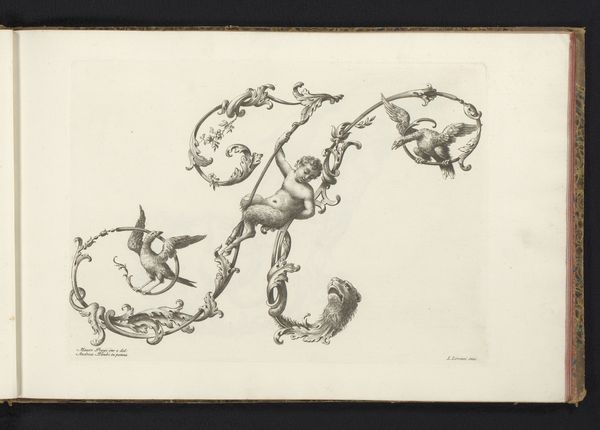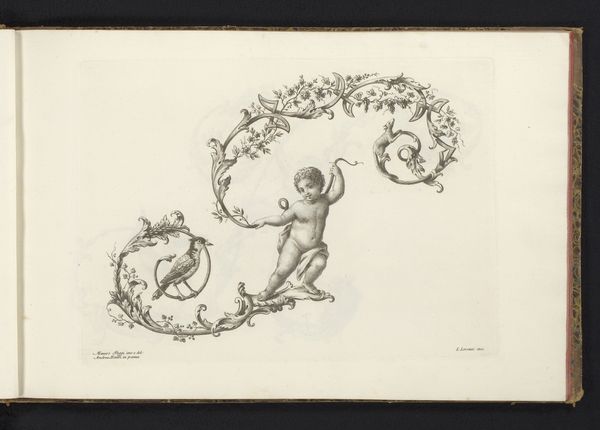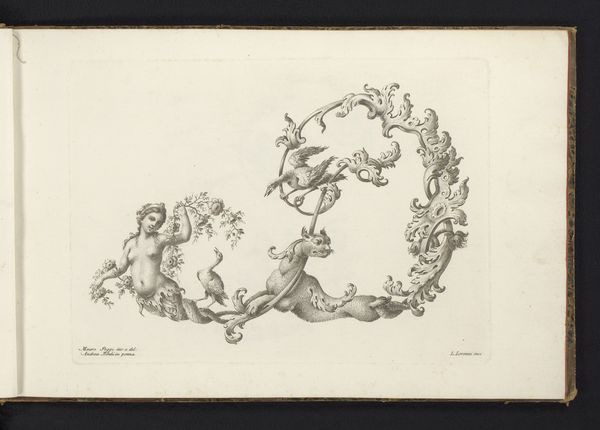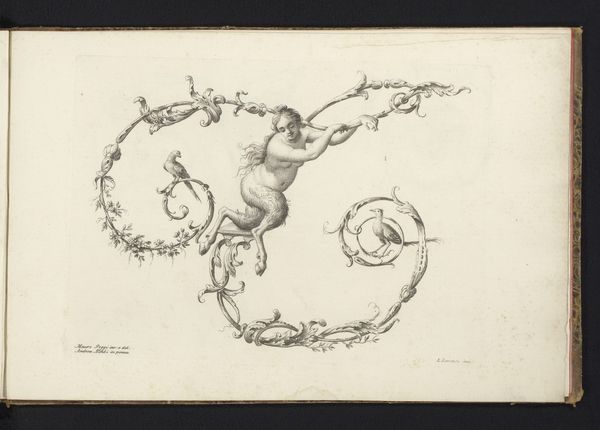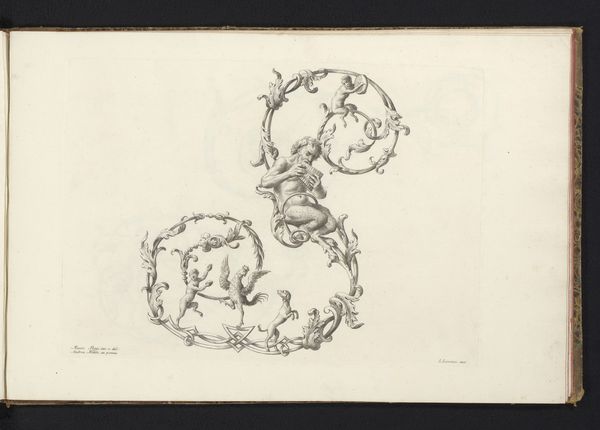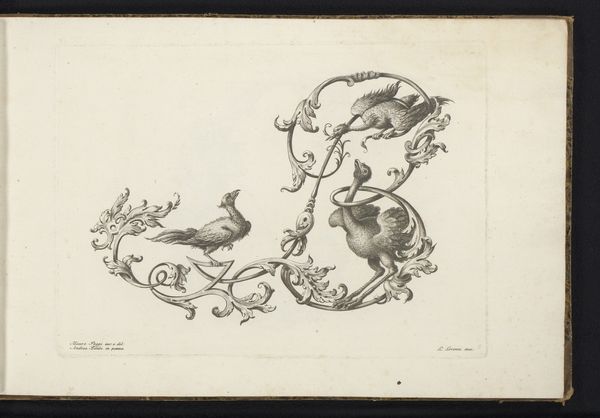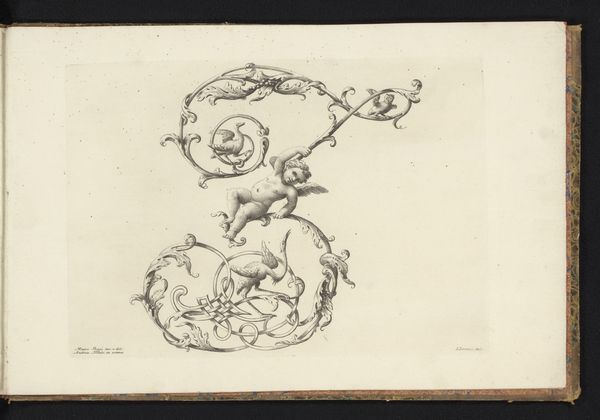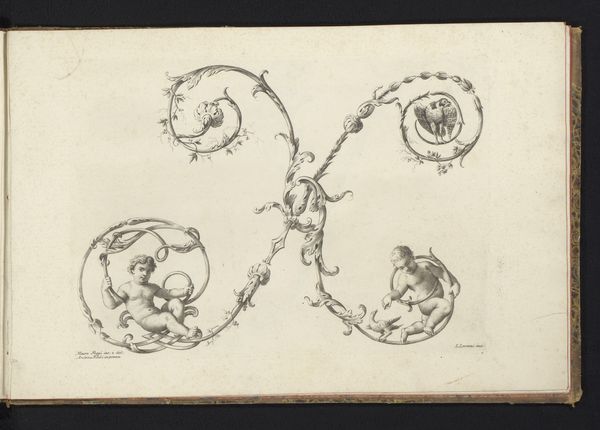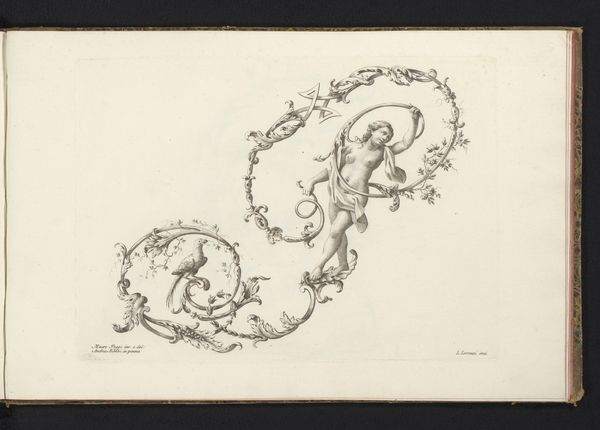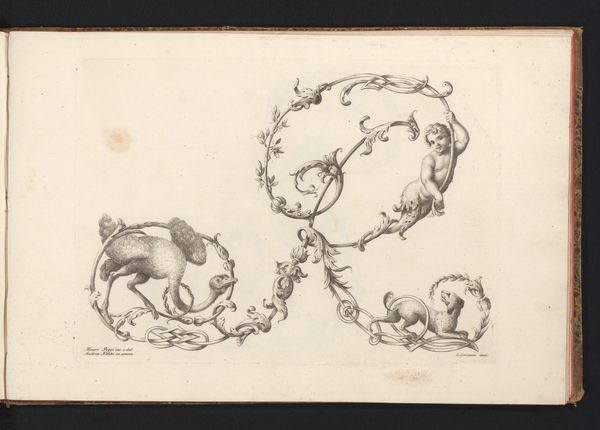
drawing, paper, ink
#
drawing
#
baroque
#
pen drawing
#
pen illustration
#
pen sketch
#
figuration
#
paper
#
personal sketchbook
#
ink
#
ink drawing experimentation
#
pen-ink sketch
#
thin linework
#
pen work
#
sketchbook drawing
#
decorative-art
#
sketchbook art
Dimensions: height 226 mm, width 315 mm
Copyright: Rijks Museum: Open Domain
Curator: We’re looking at "Ornamentele letter N," a pen and ink drawing made between 1745 and 1765, attributed to Lorenzo Lorenzi, currently held at the Rijksmuseum. Editor: It's playful! It's dominated by a large "N," swirling with decorative foliage. There are cherubic figures intertwined in the letter's form—some are riding fantastical beasts, while others tumble about. The light ink gives it an ethereal quality. Curator: Right, consider the craft: the labor intensive thin linework typical of pen and ink during the Baroque. The medium dictates the detailed, almost lace-like quality. This likely functioned as a template or sketch, perhaps for larger decorative works, connecting to a broader economy of ornamental design. Editor: Exactly. The placement of the cherubs isn't arbitrary. They are strategically placed within the letterform. But, why an "N"? Who was the intended recipient? Was it a commission, and how might the patron's identity influence the artist’s decisions regarding subject matter? Are we looking at purely decorative or is there a personal, potentially political, message interwoven? Curator: Good questions. From my point of view, we can examine the production of these decorative drawings within the context of workshops and the division of labor, looking into how these skills were transmitted and the economic value placed on artisanal expertise. These works often blurred lines between art and craft, thus influencing status. Editor: Absolutely, because even the act of decoration becomes politicized! Decoration has historically been gendered; practices coded as "feminine" being subsequently devalued in hierarchical models of art history. Where does this piece fit within those dialogues of taste, class, and power? Curator: I think focusing on its materiality is helpful: ink on paper – widely available materials transformed through skill and labor. The drawing would've been accessible as a reproducible design. We see the Baroque interest in elaborate ornament impacting both luxury and more commonplace goods. Editor: Agreed. Examining "Ornamentele letter N" we see how decorative traditions carry embedded cultural assumptions, shaping not only artistic trends, but also, societal perceptions. Curator: So by looking closely at the process and function, we learn something profound. Editor: Indeed! Through an intersectional lens we begin to understand deeper meanings about gender, design, and social structures.
Comments
No comments
Be the first to comment and join the conversation on the ultimate creative platform.
